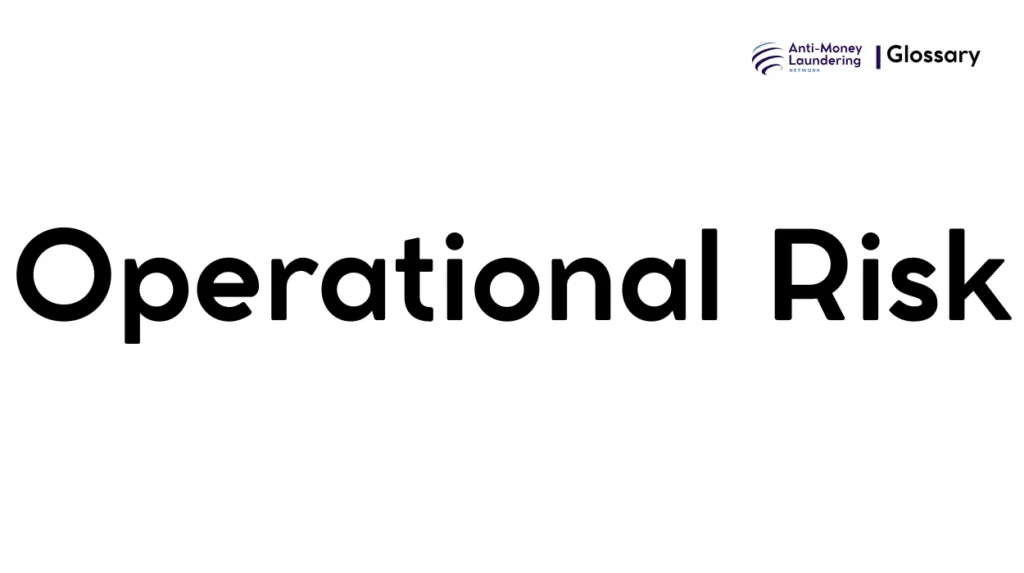Definition
Operational Risk in AML refers to the potential for financial loss, regulatory sanctions, or reputational damage resulting from inadequate or failed internal processes, people, systems, or external events that compromise an institution’s ability to effectively detect and prevent money laundering activities.
Purpose and Regulatory Basis
Operational Risk matters in AML because lapses or failures can allow illicit funds to penetrate financial systems, undermining global efforts to combat financial crime. Regulatory bodies worldwide emphasize managing this risk as a critical component of AML compliance.
Key global standards and regulations include:
- Financial Action Task Force (FATF) Recommendations: Stress the importance of risk-based approaches and controls addressing operational vulnerabilities.
- USA PATRIOT Act: Requires U.S. financial institutions to establish AML programs that mitigate operational risks related to money laundering.
- European Union Anti-Money Laundering Directive (AMLD): Mandates comprehensive risk management procedures targeting operational weaknesses.
When and How it Applies
Operational Risk arises whenever there is the possibility of failure in AML-related processes, such as:
- Improper customer due diligence (CDD) or know your customer (KYC) procedures.
- Inadequately trained staff failing to recognize suspicious activity.
- Systems malfunction in transaction monitoring software.
- External events like cyberattacks affecting data integrity.
For example, a bank’s failure to update its monitoring system to flag emerging typologies of laundering creates operational risk that can be exploited by criminals.
Types or Variants
Operational Risk in AML can be categorized into several forms:
1. Process Risk
Failures in AML procedures, e.g., gaps in transaction monitoring or inadequate escalation paths.
2. People Risk
Insufficient training, negligence, or intentional misconduct by employees impacting AML controls.
3. Systems Risk
Technology failures such as software bugs, inaccurate data feeds, or lack of system updates.
4. External Risk
Events outside institutional control including cyber threats or third-party vendor failures.
Procedures and Implementation
Financial institutions implement robust processes to manage Operational Risk:
Step 1: Risk Assessment
Identify and assess operational vulnerabilities related to AML controls.
Step 2: Establish Control Framework
Develop policies, procedures, and controls tailored to mitigate identified risks.
Step 3: Training and Awareness
Regularly train employees on AML risks and detection techniques.
Step 4: Technology Integration
Deploy and maintain effective monitoring and reporting systems.
Step 5: Continuous Monitoring and Audit
Regularly review and test AML controls to ensure effectiveness and compliance.
Impact on Customers/Clients
From a customer perspective, operational risk management leads to:
- Enhanced protection against fraudulent transactions.
- Requirements to provide detailed information and documentation.
- Possible delays or requests for additional verification to comply with AML safeguards.
These measures may affect customer experience but are critical for the integrity of financial systems.
Duration, Review, and Resolution
Operational risk management in AML is ongoing. Institutions must:
- Continuously review and update AML policies to adapt to new risks.
- Periodically audit operations and systems.
- Address identified deficiencies promptly to avoid regulatory penalties.
Reporting and Compliance Duties
Institutions bear responsibilities such as:
- Documenting operational risk assessments and mitigation actions.
- Reporting suspicious activities or control breaches to appropriate authorities.
- Cooperating with regulators during examinations and investigations.
Failure to manage operational risk adequately can result in fines, sanctions, and reputational damage.
Related AML Terms
Operational Risk connects with multiple AML concepts, including:
- Customer Due Diligence (CDD): Operational failures here increase laundering risk.
- Transaction Monitoring: System weaknesses affect detection capability.
- Suspicious Activity Reporting (SAR): Timely identification and reporting depend on strong operational controls.
Challenges and Best Practices
Challenges
- Rapidly evolving money laundering techniques.
- Integration of legacy systems with modern technology.
- Ensuring consistent staff training.
Best Practices
- Implement a risk-based approach customized to institutional risks.
- Invest in advanced analytics and AI-driven monitoring tools.
- Foster a compliance culture emphasizing accountability.
Recent Developments
Recent trends influencing operational risk in AML include:
- Adoption of machine learning for enhanced anomaly detection.
- Increased regulatory scrutiny on operational resilience.
- Greater public-private information sharing to identify global threats.
Operational Risk is a cornerstone of AML compliance, encompassing failures in processes, people, and systems that could enable money laundering. Effective management safeguards institutions from financial and reputational harm while supporting global financial integrity.

